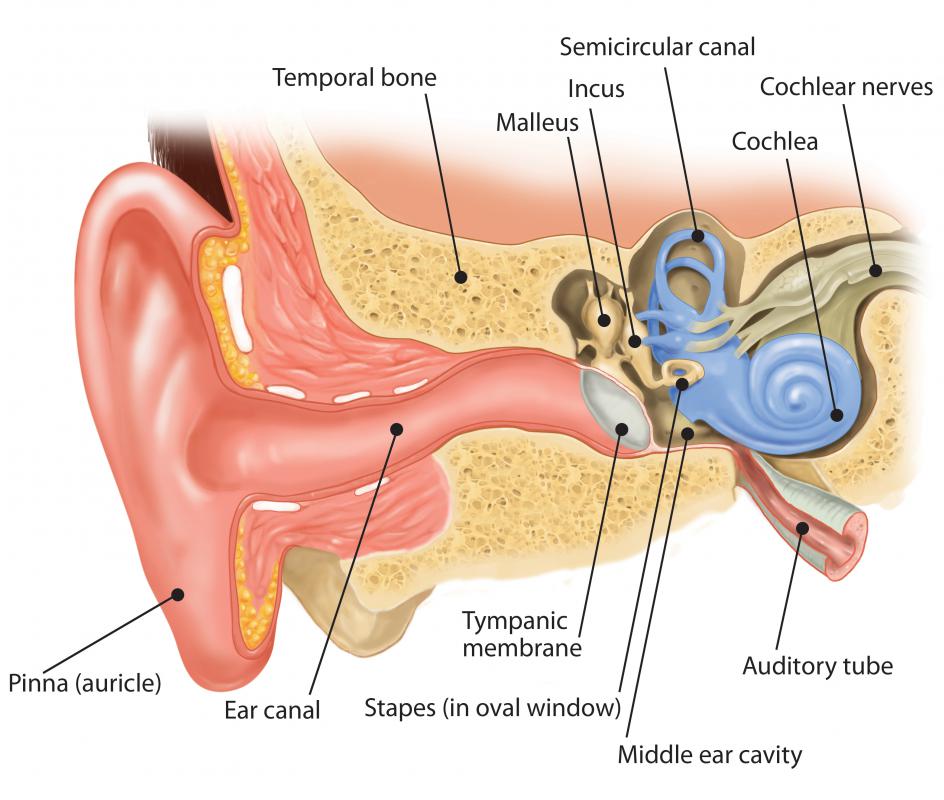At WiseGEEK, we're committed to delivering accurate, trustworthy information. Our expert-authored content is rigorously fact-checked and sourced from credible authorities. Discover how we uphold the highest standards in providing you with reliable knowledge.
What is a Bone Conduction Hearing Aid?
A bone conduction hearing aid helps a person to hear by boosting sound vibrations that travel to a person’s ear drum through the bones in the head and face. In people with normal hearing, sound travels to the part of the inner ear that senses sound through vibrations in the air and also through vibrations in the skull. This kind of hearing aid is worn around or implanted into the skull, and though these devices are not as efficient as hearing aids that amplify sounds traveling through the air, they can improve hearing in patients who are unable to wear a traditional air conduction hearing aid.
A bone conduction hearing aid uses the principle that sound travels through bone just as it does through the air. In general, bone conduction is best for sounds that are low in pitch. People with normal hearing perceive sound both through the air and through bone, though the majority of sound is perceived through the air.

The most basic form of this type of hearing aid is worn on the head. The electronic components sit behind the ear or can be worn on the body. Usually, this type of hearing aid is attached to a headband or to specially modified eyeglasses that fit tightly against the head, allowing the hearing aid to come into contact with the skull. The pressure needed to make a strong connection between the hearing aid and the skull can make these devices uncomfortable to wear.

Another type of bone conduction hearing aid is physically inserted into the bone. This device is implanted into that part of the skull that is just behind the ear. Electronic components can be plugged into this implant, and devices such as televisions or stereo systems can attach directly to the hearing aid through special connectors. These devices are more comfortable to wear than traditional bone conducting hearing aids, though surgery is required in order to attach them to the patient’s skull.

A bone conduction hearing aid is appropriate for people who suffer from chronic ear infections or who have severe conductive hearing loss. A malformation or blockage in the ear canal, which can cause hearing loss, may make a traditional air conduction hearing aid unsuitable. Passing sound to the cochlea through the skull allows the ear canal to be bypassed, improving the hearing of a patient with problems of the ear canal.
AS FEATURED ON:
AS FEATURED ON:













Discuss this Article
Post your comments